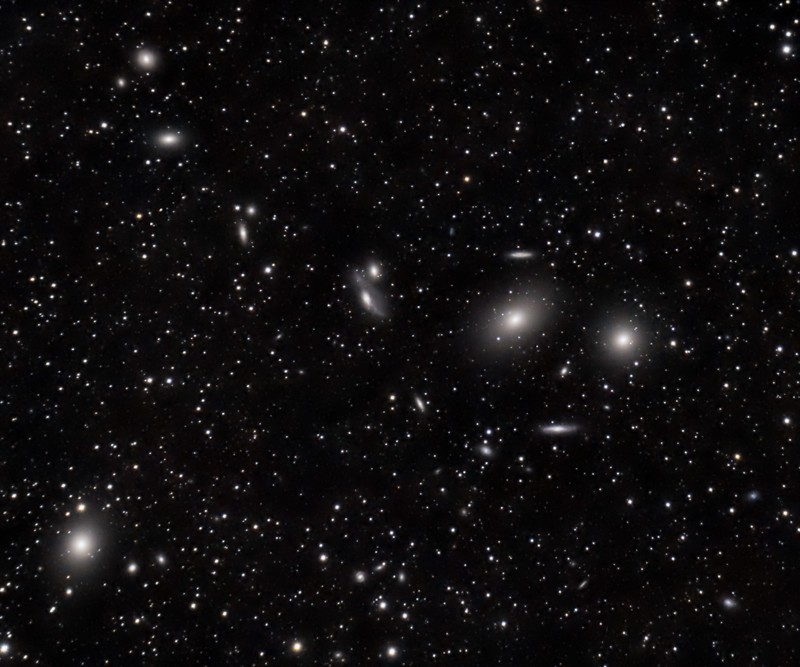Markarian Chain Widefield
Description
Markarian's Chain is a stretch of galaxies that forms part of the Virgo Cluster. It is called a chain because, when viewed from Earth, the galaxies lie along a smoothly curved line. It was named after the Armenian astrophysicist, B. E. Markarian, who discovered their common motion in the early 1960s. Member galaxies include M84 (NGC 4374), M86 (NGC 4406), NGC 4477, NGC 4473, NGC 4461, NGC 4458, NGC 4438 and NGC 4435. Messier 86 (also known as M86 or NGC 4406) is an elliptical or lenticular galaxy in the constellation Virgo. It was discovered by Charles Messier in 1781. M86 lies in the heart of the Virgo Cluster of galaxies and forms a most conspicuous group with another giant, Lenticular Galaxy M84. It displays the highest blue shift of all Messier objects, as it is approaching the Milky Way at 244 km/s. This is due to its falling towards the center of the Virgo cluster from the opposite side, which causes it to move in the direction of the Milky Way. Messier 84 (also known as M84 or NGC 4374) is an elliptical or lenticular galaxy in the constellation Virgo. M84 is situated in the hea vily populated inner core of the Virgo Cluster of galaxies. Radio observations and Hubble Space Telescope images of M84 have revealed two jets of matter shooting out from the galaxy's center as well as a disk of rapidly rotating gas and stars indicating the presence of a 1.5 10*9 supermassive black hole. It also has a few young stars and star clusters, indicating star formation at a very low rate.
Equipment and processing
Telescope: Astrotech AT72ED
Mount: Meade LXD55
Camera: Pentax K-30
Filters: None
Guiding: None
Processing: PixInsight
Capture software: Intervalometer
Exposures: ISO1600 118x60
Location: UACNJ
